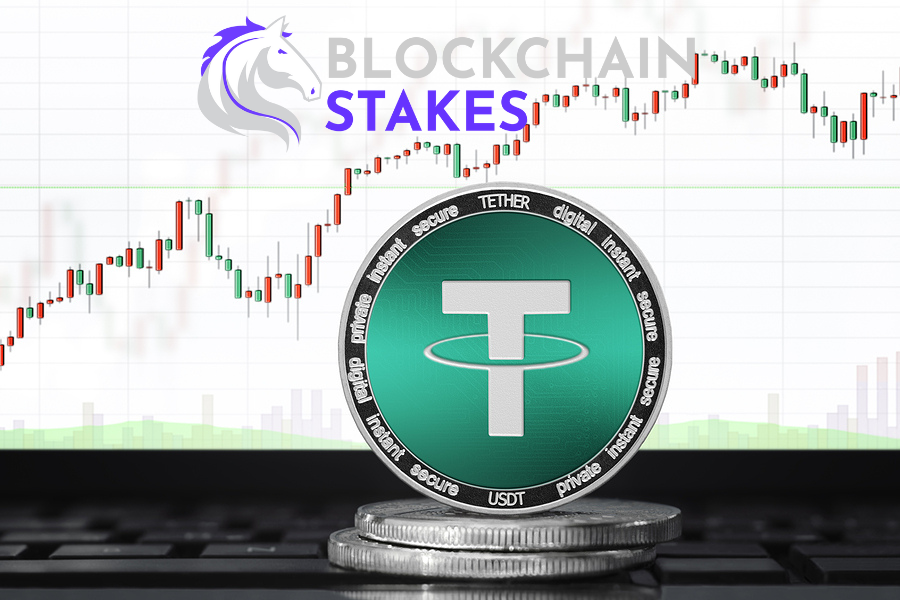Introduction
Ethereum, the world’s leading smart contract platform, has revolutionized the blockchain space with its innovative capabilities and widespread adoption. Staking Ethereum (ETH) plays a crucial role in securing the network and enabling its transition to Ethereum 2.0, a more scalable and sustainable blockchain. However, traditional staking methods often pose significant barriers, such as the requirement to stake a minimum of 32 ETH, the lack of liquidity for staked assets, and the complexity of managing validator nodes.
Enter Lido, a pioneering liquid staking solution designed to democratize and simplify the staking process. Lido allows users to stake any amount of ETH without the need for complex setups or large capital commitments. By leveraging Lido, users receive stETH, a tokenized version of their staked ETH, which retains liquidity and can be utilized across various decentralized finance (DeFi) protocols.
This post delves into the intricacies of the Lido ecosystem, focusing on the pivotal roles played by LDO and stETH tokens. We will explore how Lido works, the benefits it offers to Ethereum stakers, the integration of stETH with other DeFi protocols, and the future prospects for stETH within the expanding DeFi landscape. Whether you’re a seasoned crypto enthusiast or a newcomer looking to stake your ETH, this guide will provide valuable insights into the innovative world of Lido.
What is Lido?
Lido is a non-custodial liquid staking solution for Ethereum, designed to address the limitations and challenges associated with traditional ETH staking. Traditional staking requires users to lock up a minimum of 32 ETH and operate a validator node, which can be both capital-intensive and technically complex. Lido simplifies this process by enabling users to stake any amount of ETH, democratizing access to staking rewards and enhancing the liquidity of staked assets.
Solving Staking Challenges
Lido aims to solve three primary issues associated with conventional ETH staking:
- Illiquidity: In traditional staking, staked ETH is locked and cannot be used until it is unstaked, which can take a considerable amount of time. Lido addresses this by issuing stETH tokens on a 1:1 basis for deposited ETH. These stETH tokens can be transferred, traded, or used in various DeFi protocols, providing liquidity for staked ETH.
- Immovability: Once ETH is staked in the traditional manner, it is generally locked and immovable until it is withdrawn. With Lido, users can move their stETH tokens freely, allowing them to maintain flexibility and access to their assets.
- Inaccessibility: The requirement to stake a minimum of 32 ETH and the technical expertise needed to run a validator node make staking inaccessible to many users. Lido eliminates these barriers by allowing users to stake any amount of ETH without the need to manage validator operations.
Non-Custodial Nature
One of Lido’s key features is its non-custodial nature. When users stake their ETH through Lido, they retain ownership of their assets. The ETH is deposited into Lido’s smart contracts and pooled together, ensuring that users’ funds are secure and under their control. This approach ensures that users do not have to trust a central entity with their assets, enhancing security and decentralization.
Lido provides an accessible, liquid, and secure staking solution for Ethereum, empowering users to participate in the staking process without the traditional hurdles. By issuing stETH tokens that can be used across various DeFi platforms, Lido not only democratizes staking but also integrates it into the broader DeFi ecosystem, making it a cornerstone of modern Ethereum staking.
How Lido Staking Works
Lido revolutionizes Ethereum staking by providing a seamless, liquid staking experience. Here’s a step-by-step look at how Lido staking works and the mechanics behind it:
Depositing ETH and Receiving stETH
When users decide to stake their Ethereum through Lido, they follow a straightforward process:
Deposit ETH: Users deposit their ETH into Lido’s smart contract. This can be done with any amount of ETH, eliminating the need for the 32 ETH minimum required for solo staking.
Receive stETH: In return for their deposited ETH, users receive an equivalent amount of stETH tokens on a 1:1 basis (e.g., 1 ETH = 1 stETH). These stETH tokens represent the user’s staked ETH and are issued immediately.
Pooling and Staking ETH
Once ETH is deposited into Lido’s smart contract, it is pooled together with ETH from other users. This pooled ETH is then distributed to a set of pre-approved node operators who manage the actual staking process:
- Node Operators: Lido collaborates with a diverse set of professional and reputable node operators. This distribution helps mitigate the risks associated with individual validator failures and enhances the overall security and reliability of the staking process.
- Staking and Rewards: The pooled ETH is staked on the Ethereum network, and the rewards generated from staking are distributed proportionally to all stETH holders. These rewards accrue daily and are reflected through a process called rebasing.
Daily Rebasing and Earning Rewards
One of the unique features of Lido’s stETH tokens is the daily rebasing mechanism:
- Rebasing: Each day, the stETH balance of holders increases to reflect the staking rewards earned by the pooled ETH. For example, if a user holds 10 stETH, and the staking rewards amount to a 5% annual yield, the stETH balance will incrementally increase each day to represent this yield.
- Transparency: Users can see the growth in their stETH balance directly in their wallets, providing clear visibility into their staking rewards without the need to claim or reinvest them manually.
Liquidity and Flexibility
Lido’s stETH tokens provide significant liquidity and flexibility, distinguishing them from traditional staked ETH:
- Transferability: stETH can be freely transferred between users, allowing holders to maintain control and flexibility over their staked assets.
- Trading and DeFi Integration: stETH can be traded on various decentralized exchanges (DEXes) or used as collateral in lending protocols, yield farming, and other DeFi applications. This integration enables users to maximize the utility of their staked ETH while continuing to earn staking rewards.
Lido simplifies and enhances the Ethereum staking process by offering a liquid staking solution that is accessible to everyone, regardless of the amount of ETH they hold. By issuing stETH tokens in exchange for staked ETH, Lido provides liquidity and flexibility, allowing users to participate in DeFi activities while earning staking rewards. Through its collaboration with trusted node operators and the innovative daily rebasing mechanism, Lido ensures that users can stake ETH securely and efficiently.
Roles of stETH and LDO in the Lido Ecosystem
In the Lido ecosystem, two key tokens play crucial roles: stETH and LDO. Each serves distinct purposes that contribute to the functionality, governance, and overall effectiveness of the Lido platform.
stETH (Staked Ethereum)
Definition and Purpose
- stETH is an ERC-20 token that represents staked ETH within the Lido protocol. When users stake their ETH through Lido, they receive stETH on a 1:1 basis, meaning 1 stETH is equivalent to 1 staked ETH.
- stETH accrues staking rewards over time, which are automatically reflected in the token balance through a daily rebasing process.
Key Features and Benefits
- Liquidity: Unlike traditional staked ETH, which is locked and immovable, stETH can be freely transferred, traded, or utilized across various DeFi protocols. This liquidity allows users to maintain access to their staked assets.
- Earning Rewards: stETH holders continue to earn staking rewards, which are represented by an increasing stETH balance. This means users benefit from staking yields while still having the flexibility to use their assets.
- DeFi Integration: stETH is widely accepted in the DeFi ecosystem. It can be used as collateral for loans, supplied to liquidity pools, or deposited in yield farming strategies, enabling users to generate additional returns on their staked ETH.
LDO (Lido DAO Token)
Definition and Purpose
- LDO is the governance token of the Lido decentralized autonomous organization (DAO). It grants holders voting rights, enabling them to participate in decision-making processes that shape the future of the Lido protocol.
- The LDO token incentivizes active participation in the governance of Lido, ensuring that the protocol remains decentralized and community-driven.
Key Features and Benefits
- Governance: LDO holders can vote on critical proposals related to protocol parameters, fee structures, the selection of node operators, and other important aspects of Lido’s operation.
- Incentives: By holding and staking LDO, users can earn a share of the fees generated by Lido’s staking services. This creates an incentive for users to hold and actively participate in the governance of the platform.
- Decentralized Decision-Making: LDO ensures that control over the protocol is distributed among its community members rather than being centralized in a single entity.
Usage Scenarios
- Voting: LDO holders participate in governance votes to influence the direction and policies of the Lido protocol.
- Earning Fees: LDO stakers receive a portion of the fees generated from staking services, aligning the interests of the community with the success of the protocol.
- Protocol Improvements: LDO holders can propose and vote on improvements, fostering innovation and responsiveness to the needs of the community.
In the Lido ecosystem, stETH and LDO tokens serve complementary roles that enhance the platform’s functionality and governance. stETH provides liquidity and utility for staked ETH, allowing users to earn rewards while participating in the broader DeFi ecosystem. LDO empowers the community with governance capabilities, ensuring that Lido remains decentralized and responsive to its users. Together, these tokens create a robust and dynamic staking solution that addresses the limitations of traditional Ethereum staking.
Interaction of stETH with Other DeFi Protocols
One of the most compelling features of Lido’s stETH token is its seamless integration with various decentralized finance (DeFi) protocols. This integration enhances the utility and liquidity of staked ETH, enabling users to maximize their returns and participate in a wide array of financial activities while still earning staking rewards.
Liquidity Provision
- Decentralized Exchanges (DEXes): stETH can be provided as liquidity to DEXes such as Curve Finance. For instance, the stETH/ETH liquidity pool on Curve allows users to deposit their stETH and ETH, facilitating easy swaps between these tokens. By providing liquidity, users earn fees from the trading activity within the pool, thereby generating additional returns on their staked ETH.
- Enhanced Liquidity: This setup ensures that stETH remains highly liquid, allowing users to enter and exit positions without significant price impact. The availability of stETH on various DEXes contributes to its stability and usability within the DeFi ecosystem.
Lending and Borrowing
- Lending Platforms: stETH can be supplied to lending protocols like Aave and Compound. Users who deposit stETH into these platforms can earn interest on their holdings, further enhancing their returns.
- Collateral for Loans: stETH can be used as collateral to borrow other assets. This feature is particularly beneficial for users who need liquidity but do not want to unstake their ETH. By borrowing against stETH, users can access funds while their stETH continues to accrue staking rewards.
Yield Farming
- Yield Optimization Vaults: stETH can be deposited into yield optimization platforms like Yearn Finance or Convex Finance. These vaults automatically manage and optimize the yields generated from the deposited assets. By utilizing strategies that compound returns, these platforms can enhance the staking rewards earned from stETH.
- Additional Yield: Yield farming with stETH allows users to stack multiple sources of income, combining staking rewards with returns from yield farming strategies. This multi-layered approach maximizes the overall yield on staked ETH.
Collateralization
- Stablecoin Loans: stETH can be used as collateral in protocols like MakerDAO to mint DAI, a popular stablecoin. This process involves locking up stETH to generate a stablecoin loan, providing liquidity without needing to unstake ETH.
- Leveraging Assets: Using stETH as collateral enables users to leverage their assets for further investments or liquidity needs. This functionality is essential for users looking to maintain their staking position while accessing capital for other purposes.
Restaking
- Emerging Restaking Protocols: stETH is also finding use in emerging restaking protocols like EtherFi and Renzo. These platforms allow users to stake their stETH to earn additional yield by participating in the validation of other blockchain networks.
- Staking-on-Staking: This concept of restaking creates a compounding effect, where users can earn rewards from multiple layers of staking. It represents an innovative way to maximize the utility and returns of staked assets.
The integration of stETH with various DeFi protocols significantly enhances its utility and liquidity, allowing users to engage in multiple financial activities while earning staking rewards. From providing liquidity on DEXes and participating in lending and borrowing to yield farming and collateralizing loans, stETH offers a versatile and dynamic asset for DeFi enthusiasts. Additionally, the emerging trend of restaking further expands the opportunities for stETH holders to maximize their returns. This extensive interoperability makes stETH a cornerstone of the DeFi ecosystem, bridging the gap between staking and decentralized finance.
Future Plans for Lido’s stETH Token
As Lido continues to evolve and expand, the future plans for its stETH token focus on enhancing utility, promoting decentralization, and fostering a robust restaking ecosystem. These plans are aimed at solidifying stETH’s position as a fundamental asset in the DeFi space while ensuring its growth and sustainability.
Promoting a Decentralized Restaking Ecosystem
Lido’s vision for the future includes the development of a decentralized and permissionless restaking ecosystem centered around stETH. This involves:
- New Restaking Protocols: Lido aims to endorse and collaborate with new protocols that provide permissionless restaking architecture for stETH. These protocols will enable users to stake their stETH in additional networks, earning more rewards and enhancing the token’s utility.
- Liquid Restaking Tokens (LRTs): Projects developing LRTs using stETH as collateral will be key partners in this ecosystem. These tokens represent another layer of staking, allowing users to earn yields from multiple sources simultaneously.
- Actively Delegated Validator Services (AVSs): Lido plans to support teams building AVSs that accept stETH for securing other blockchain networks. This approach will create a “staking-on-staking” model, further compounding the rewards for stETH holders.
Enhancing Utility and Integration
Lido is focused on deepening the integration of stETH across various DeFi protocols and expanding its utility:
- Liquidity Provision: Continued efforts will be made to provide liquidity to decentralized exchanges (DEXes) and liquidity pools involving stETH. This ensures that stETH remains a highly liquid asset, facilitating easy trading and conversion.
- Lending and Borrowing: Lido plans to enable more lending and borrowing options for stETH on platforms like Aave and Compound. This will allow users to leverage their stETH holdings for additional financial activities while still earning staking rewards.
- Yield Optimization: Collaborations with yield optimization platforms like Yearn Finance will be strengthened, enabling stETH holders to maximize their returns through automated yield farming strategies.
- Collateralization: Expanding the acceptance of stETH as collateral in more DeFi protocols, such as MakerDAO, will be a priority. This will allow users to generate stablecoin loans and access liquidity without unstaking their ETH.
- Restaking Support: Supporting protocols that facilitate the restaking of stETH will be a major focus. By enabling staking on multiple networks, Lido aims to maximize the yield potential for stETH holders.
Aligning Incentives and Decentralization
Lido is committed to aligning incentives to promote the decentralization of Ethereum validation through stETH. This involves:
- Node Operator Participation: Encouraging more professional node operators to join the Lido network, ensuring a diverse and decentralized validator set. This helps mitigate risks and enhances the security of the staking process.
- Community Engagement: Fostering active participation from LDO token holders in governance decisions to ensure that the protocol remains decentralized and community-driven.
- Fee Distribution: Refining the fee distribution model to benefit both node operators and LDO stakers, creating a self-reinforcing ecosystem that incentivizes active participation and contributes to the protocol’s long-term success.
Lido Alliance Framework
The proposed Lido Alliance aims to systematically endorse and partner with protocols that align with Lido’s vision of decentralization and security around stETH. This framework includes:
- Partnerships: Establishing strategic partnerships with projects that contribute to the growth and decentralization of the stETH ecosystem.
- Endorsements: Endorsing protocols and services that enhance the utility, security, and liquidity of stETH.
- Community Initiatives: Supporting community-driven initiatives that promote the adoption and integration of stETH in the broader DeFi ecosystem.
Lido’s future plans for stETH revolve around creating a decentralized restaking ecosystem, enhancing the token’s utility and integration across DeFi protocols, and aligning incentives to further decentralize Ethereum validation. Through strategic partnerships, community engagement, and a focus on innovation, Lido aims to establish stETH as a cornerstone of the DeFi landscape, providing users with unparalleled opportunities to maximize their returns while contributing to the security and decentralization of the Ethereum network.
Key Takeaways
Lido’s innovative approach to Ethereum staking through its liquid staking platform has significantly transformed the staking landscape. By providing stETH, a tokenized representation of staked ETH, Lido offers a unique solution that addresses the limitations of traditional staking methods, such as illiquidity, immovability, and high entry barriers.
What Lido Offers
Lido’s platform allows users to stake any amount of ETH, receive stETH in return, and maintain liquidity for their staked assets. This approach democratizes access to staking, making it possible for anyone to participate in securing the Ethereum network without needing the 32 ETH required for solo staking. Users benefit from the liquidity of stETH, which can be traded, transferred, or utilized across a wide range of DeFi protocols, all while earning staking rewards.
Roles of stETH and LDO
In the Lido ecosystem, stETH and LDO tokens play complementary roles. stETH provides liquidity and ongoing staking rewards, integrating seamlessly with various DeFi platforms for enhanced utility and capital efficiency. On the other hand, LDO serves as the governance token, empowering holders to participate in key decisions and ensuring the protocol remains decentralized and community-driven.
DeFi Integration
stETH’s integration with DeFi protocols amplifies its value, allowing users to provide liquidity, engage in lending and borrowing, participate in yield farming, and even collateralize loans. This extensive interoperability makes stETH a versatile asset, bridging the gap between staking and DeFi, and enabling users to maximize their returns through multiple financial activities.
Future Prospects
Looking ahead, Lido’s plans to promote a decentralized restaking ecosystem, enhance the utility and integration of stETH, and align incentives for decentralization signify a commitment to innovation and growth. The establishment of the Lido Alliance and strategic partnerships will further drive the adoption and utility of stETH, solidifying its position in the DeFi space.
Final Thoughts
Lido’s ecosystem, powered by stETH and LDO, offers a compelling solution for Ethereum staking that combines liquidity, accessibility, and security. By continuously evolving and integrating with the broader DeFi landscape, Lido ensures that its users can fully capitalize on their staked assets. As the platform grows and new opportunities emerge, Lido remains at the forefront of transforming how we stake and interact with Ethereum, paving the way for a more decentralized and inclusive financial system.




















